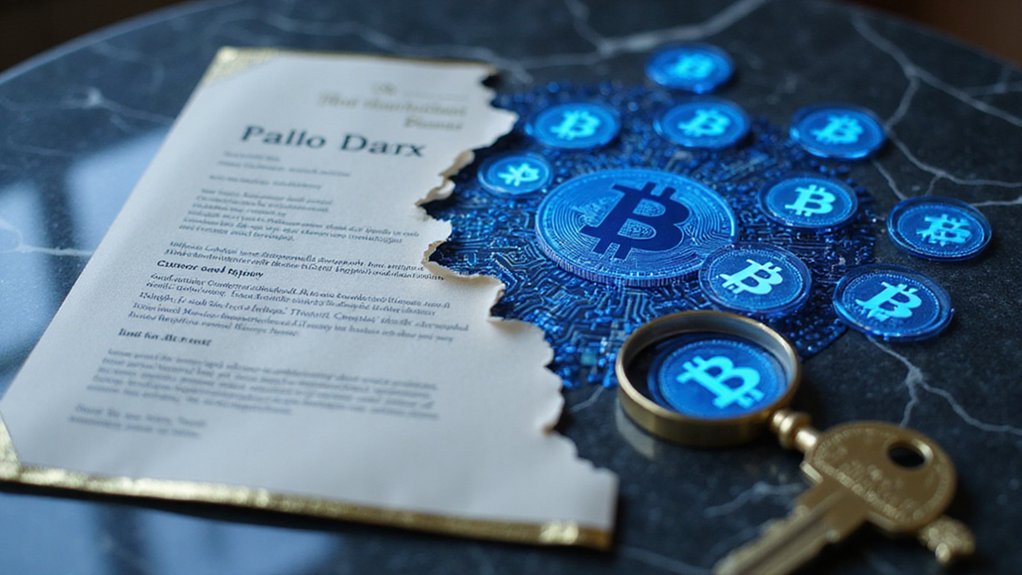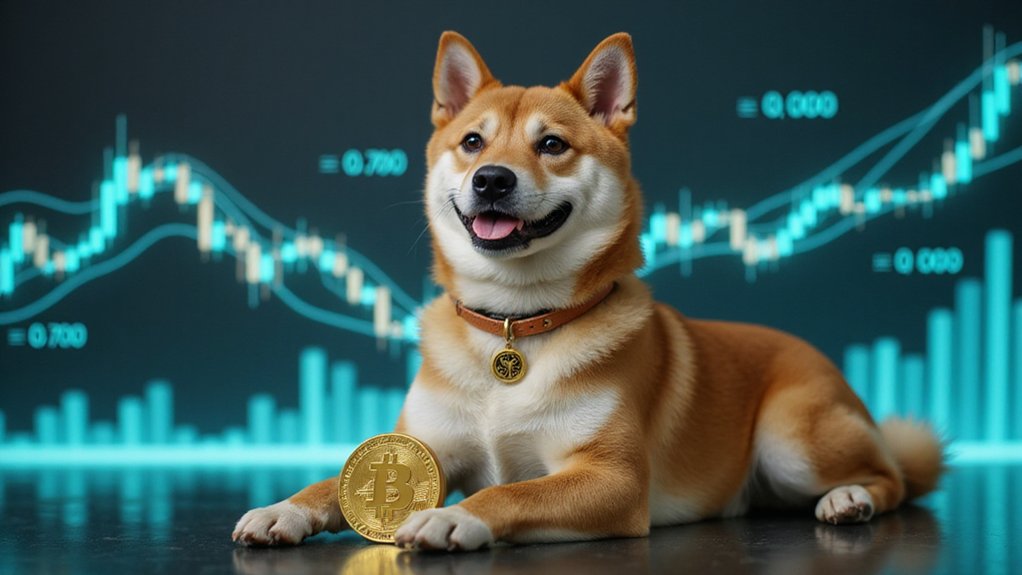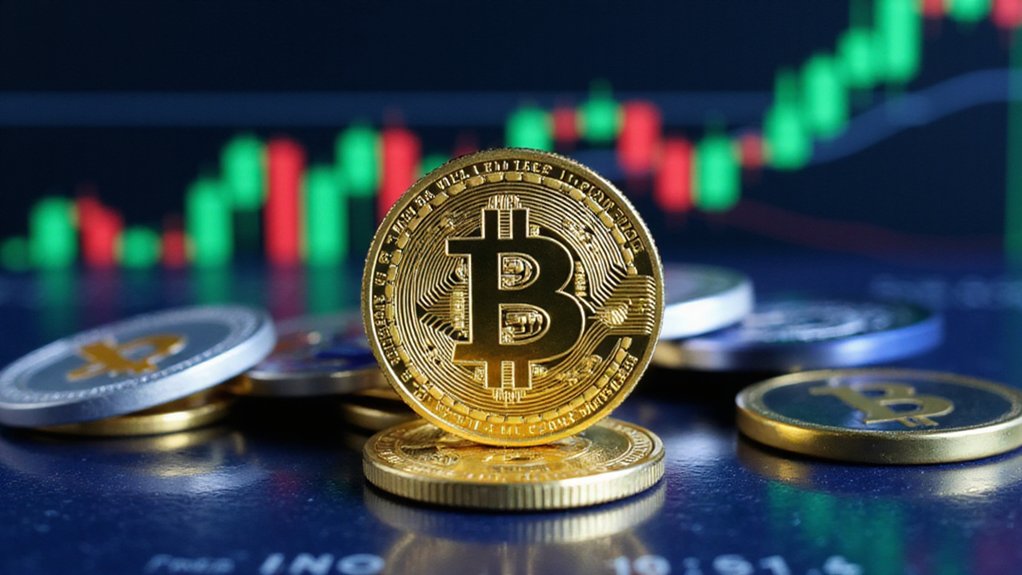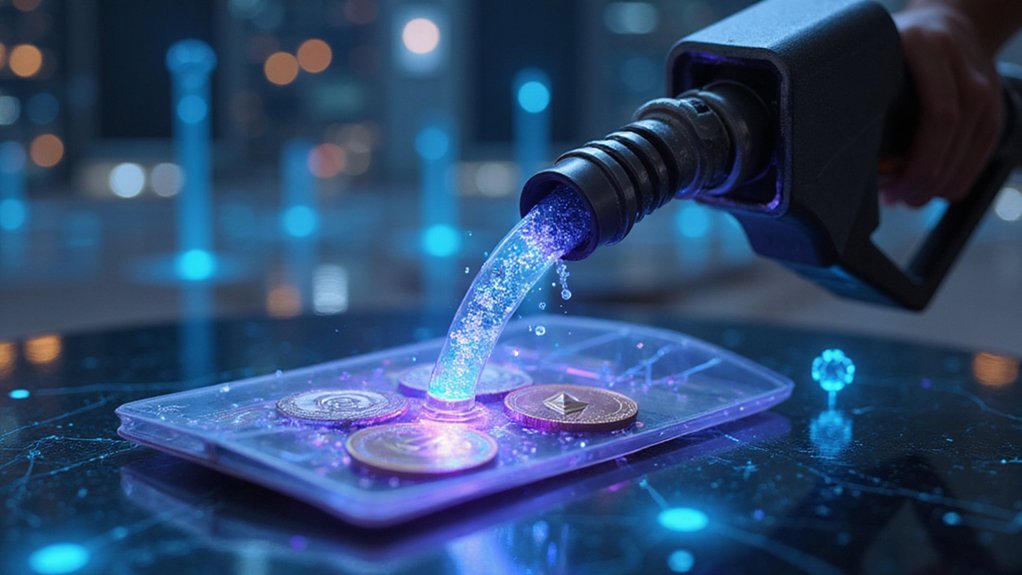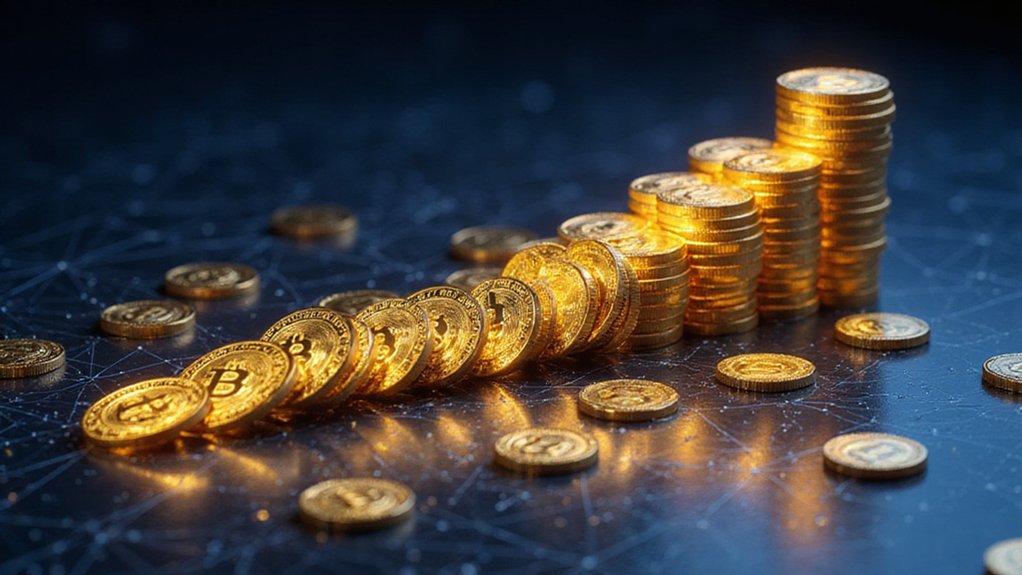Real World Assets (RWAs) in crypto represent the tokenization of tangible assets—real estate, commodities, bonds—onto blockchain networks. This financial alchemy transforms illiquid holdings into divisible, tradable digital tokens, democratizing access to investments previously reserved for the privileged few. Smart contracts govern ownership rights while custodians safeguard physical assets, creating a hybrid ecosystem where traditional finance meets decentralized technology. The market potential, measured in hundreds of trillions, suggests we’ve barely scratched the surface of this financial evolution.
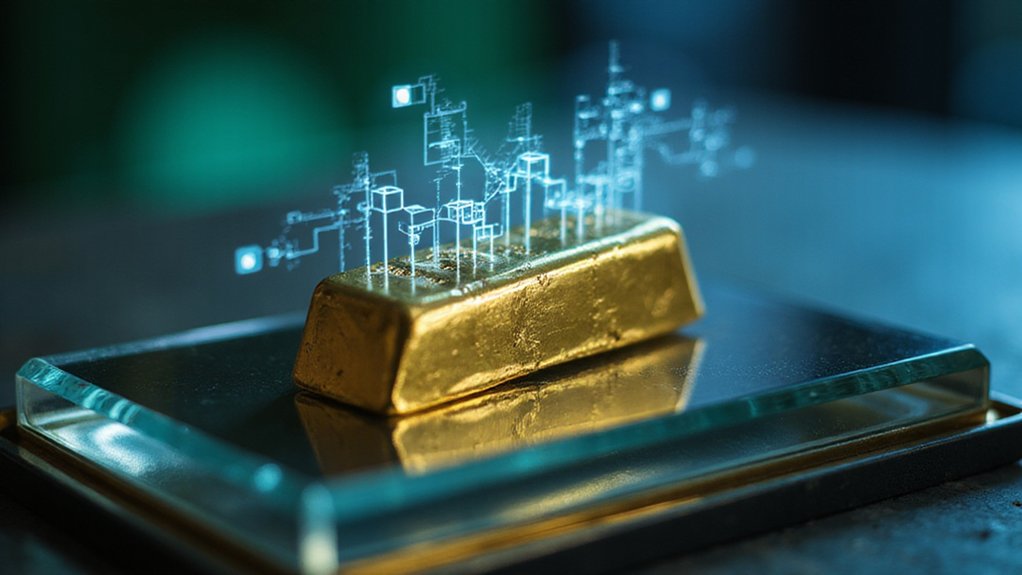
While cryptocurrencies have long promised financial revolution through purely digital assets, a quiet paradigm shift has emerged at the crossroads of traditional finance and blockchain technology: Real World Assets (RWAs).
These digital tokens represent tangible assets existing beyond the blockchain—real estate, bonds, commodities, precious metals, fine art—creating a bridge between established financial instruments and the burgeoning crypto ecosystem.
Unlike Bitcoin or Ethereum, which exist solely as digital entities, RWAs anchor themselves to physical value, thereby solving the persistent criticism of cryptocurrency’s supposedly ephemeral nature.
The tokenization process ingeniously transforms traditionally illiquid assets into divisible, tradable digital shares.
Consider the implications: a $10 million commercial property, previously accessible only to institutional investors, can be fractionally owned by thousands of retail participants with investments as modest as $100.
This democratization of access (a term admittedly overused in fintech circles) represents perhaps the most practical application of blockchain’s disruptive potential in contemporary finance.
Technical implementation relies on smart contracts that codify ownership rights, distribution rules, and transferability conditions.
The blockchain’s immutable ledger guarantees transparent, tamper-proof records—a marked improvement over the labyrinthine paper trails that have historically plagued traditional asset markets.
Custodians typically maintain the physical assets while their representative tokens circulate in the digital domain, an arrangement requiring robust legal frameworks to maintain regulatory alignment.
For investors, RWAs offer compelling advantages: portfolio diversification beyond volatile crypto assets, enhanced security protocols, fractional ownership opportunities, accelerated liquidity, and unprecedented global market access.
The DeFi ecosystem has embraced this innovation by incorporating tokenized real-world collateral into lending protocols, adding stability to an otherwise volatile landscape. Platforms like Centrifuge and Maple Finance have created on-chain marketplaces focused on connecting investors with high-quality lending opportunities backed by real-world assets.
Innovation leaders such as Ondo Finance have pioneered tranche systems for sophisticated risk management when tokenizing traditional financial instruments like bonds and ETFs.
As specialized marketplaces for RWA trading proliferate and institutional players increasingly participate in this hybrid financial architecture, one might reasonably conclude that the future of finance lies not in the wholesale replacement of traditional systems, but in their thoughtful integration with blockchain’s most practical applications.
The potential market size for tokenized RWAs reaches an astounding hundreds of trillions of dollars, representing one of the largest opportunities in the blockchain industry.
Frequently Asked Questions
How Do RWAS Compare to Traditional Cryptocurrency Tokens?
RWAs differ fundamentally from traditional cryptocurrency tokens by representing tangible assets rather than purely digital value.
While Bitcoin and Ethereum exist solely on-chain, RWAs bridge physical and digital worlds, offering fractional ownership of real-world assets like real estate or commodities.
This distinction creates different liquidity profiles—traditional tokens trade 24/7 with minimal friction, whereas RWAs incorporate off-chain legal considerations.
RWAs also face unique regulatory challenges but potentially access trillions in traditionally illiquid markets for blockchain applications.
What Regulatory Challenges Face RWA Tokenization Projects?
RWA tokenization projects face a labyrinth of regulatory hurdles that would make Kafka proud. Jurisdictional variances create compliance headaches, as assets straddle traditional securities frameworks and novel digital classifications.
AML/KYC requirements demand rigorous implementation, while custody and settlement protocols require clear legal definition.
Smart contracts must navigate existing legal structures, and sector-specific regulations add further complexity.
The absence of harmonized global standards leaves projects in precarious positions, forced to adapt to a patchwork of evolving regulations across territories.
How Can Investors Verify Authenticity of Tokenized Real-World Assets?
Investors can verify tokenized RWA authenticity through multiple mechanisms: oracle networks like Chainlink that bridge off-chain asset data; blockchain-based verification systems such as Atala PRISM for identity confirmation; third-party attestations from legal entities; transparent smart contracts with embedded verification protocols; and regulatory-compliant KYC processes.
The savvy investor, naturally, employs a combination of these methods—cross-referencing technical verification with traditional due diligence (the irony of requiring centralized trust in a decentralized ecosystem notwithstanding).
What Blockchain Platforms Are Best Suited for RWA Tokenization?
For RWA tokenization, purpose-built networks like XDC excel with their enterprise-grade architecture specifically designed for trade finance and physical assets.
Ethereum and its Layer 2 solutions (Base, Polygon) offer established standards and broader liquidity pools—albeit with varying transaction costs.
The best choice ultimately depends on specific requirements: institutional users might prioritize XDC’s hybrid architecture and compliance features, while projects seeking maximum market exposure may benefit from Ethereum‘s extensive ecosystem and interoperability advantages.
How Liquid Are RWA Tokens Compared to Physical Assets?
RWA tokens typically offer superior liquidity compared to their physical counterparts, allowing for 24/7 trading without the cumbersome transfer processes inherent to tangible assets.
While physical assets entail significant holding costs and geographical limitations, tokenized alternatives enable fractional ownership and borderless transactions—features that traditional markets simply cannot replicate.
However, this theoretical liquidity advantage remains somewhat constrained by regulatory hurdles and market depth limitations that continue to plague the nascent tokenization ecosystem.

